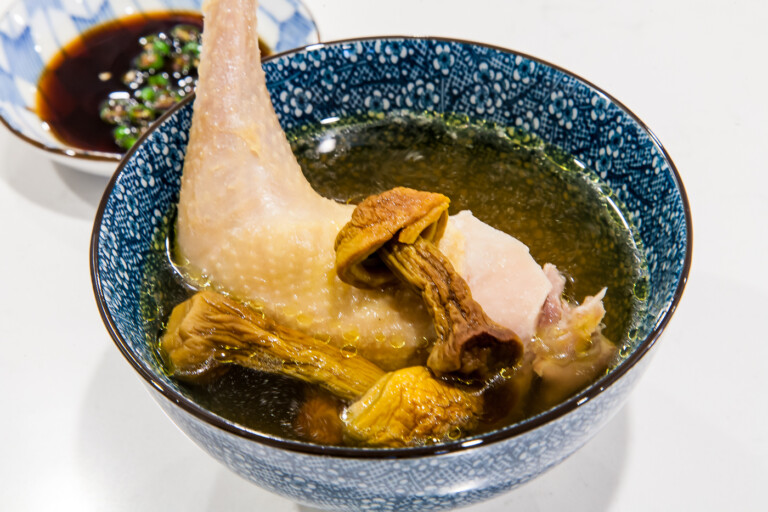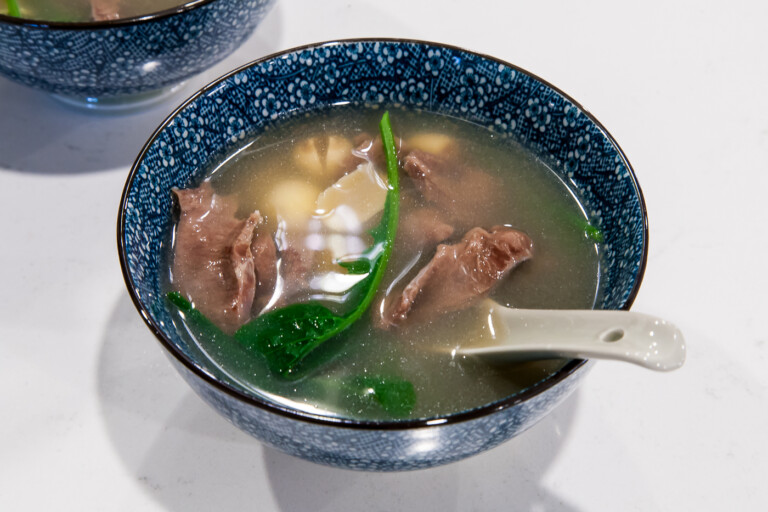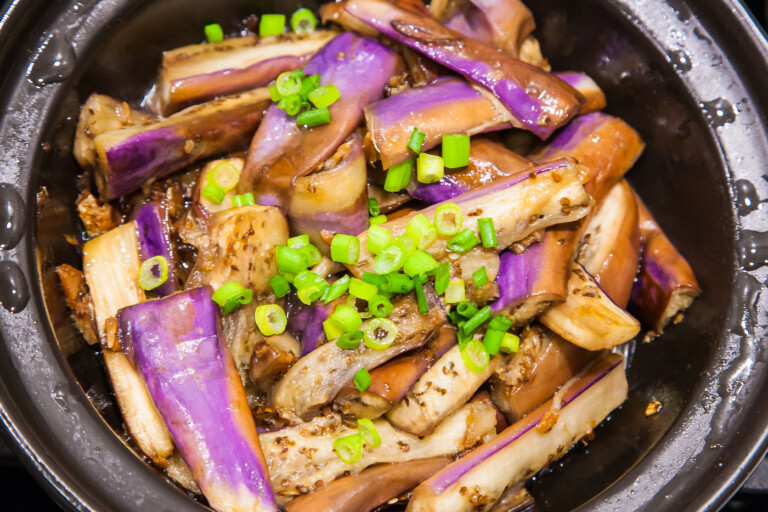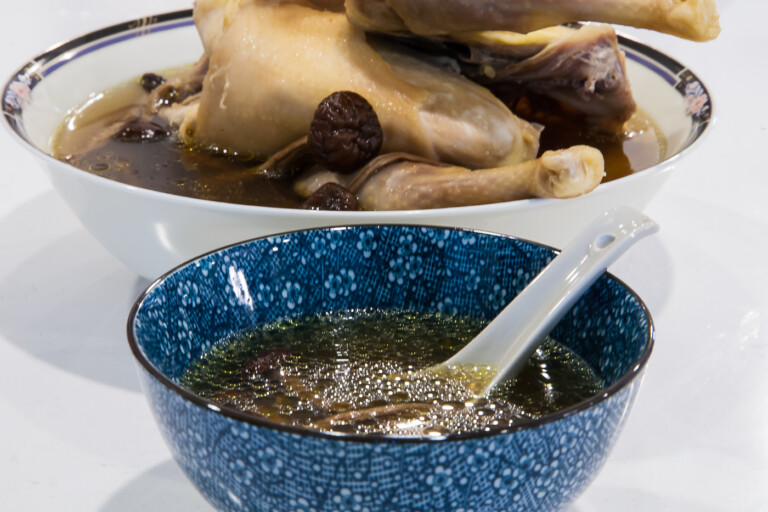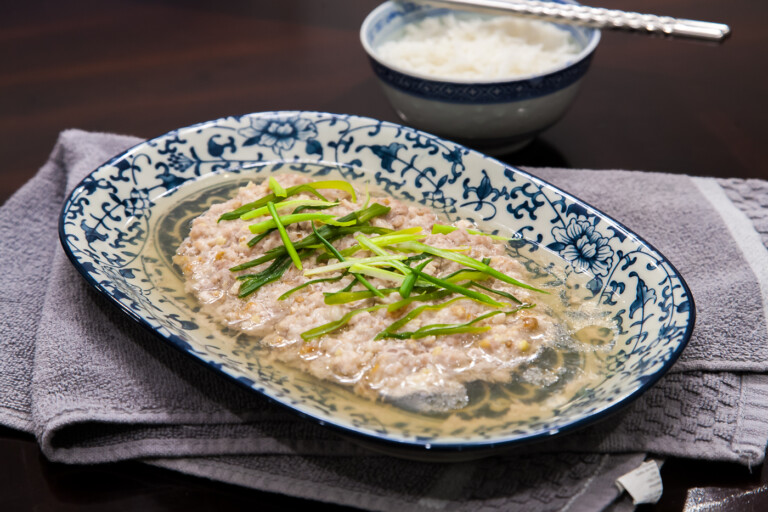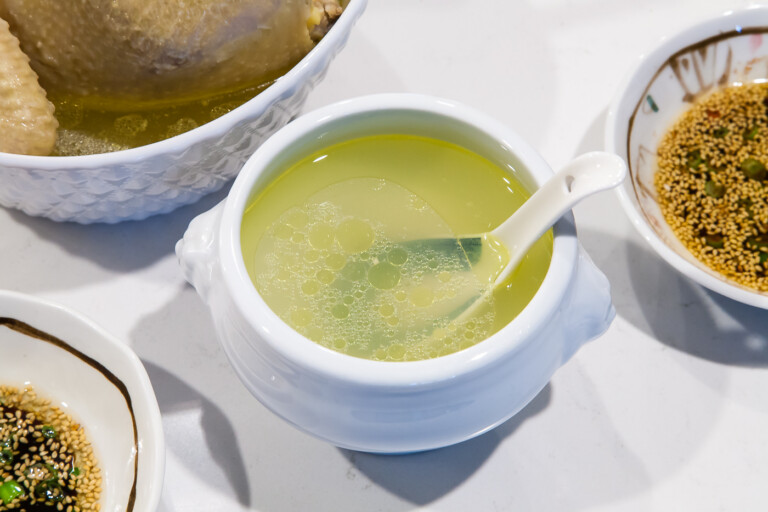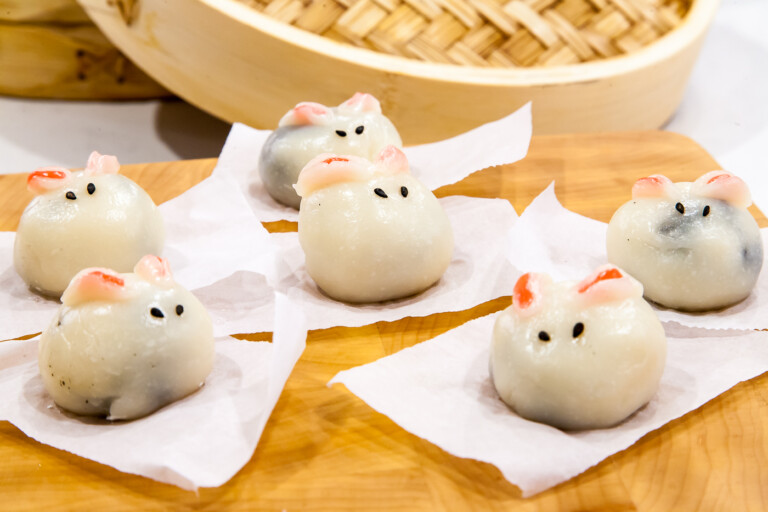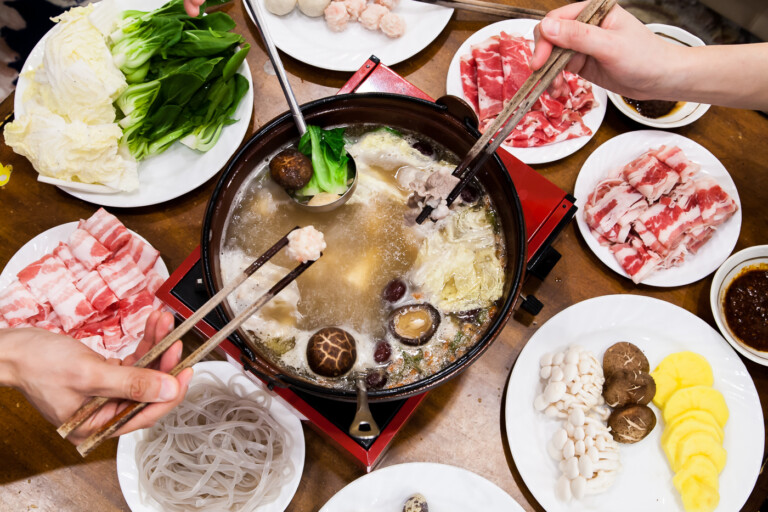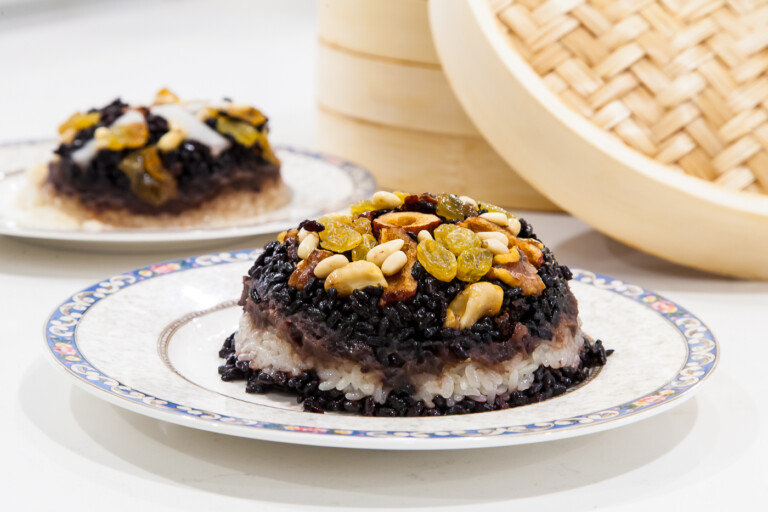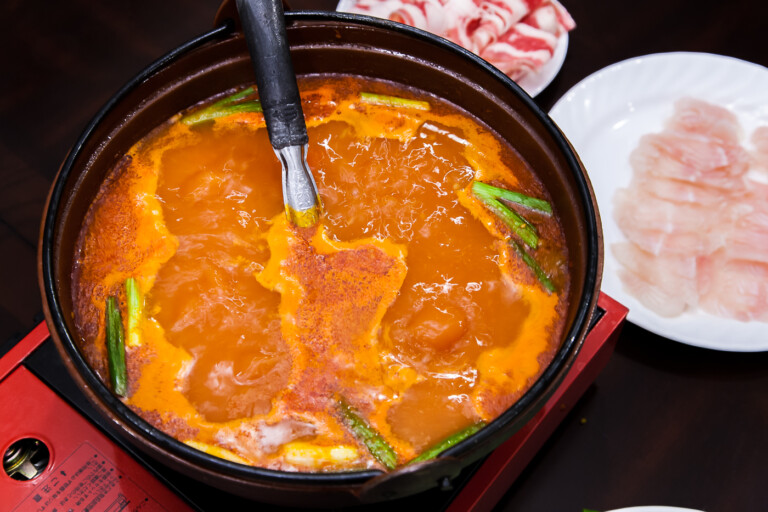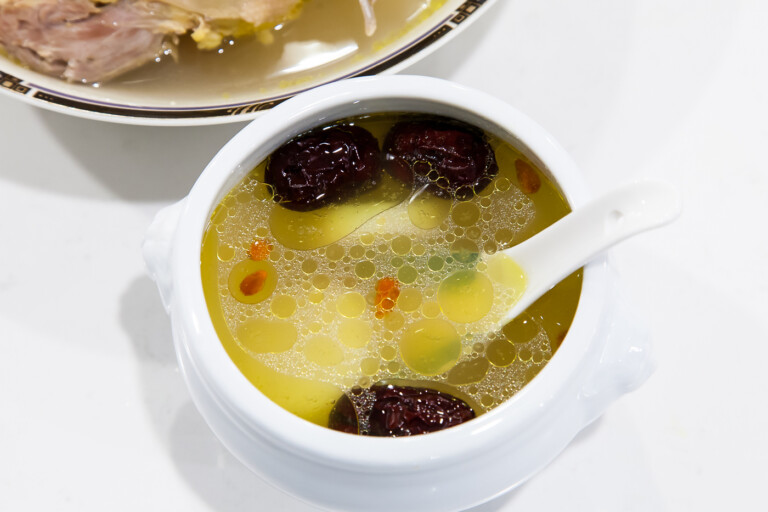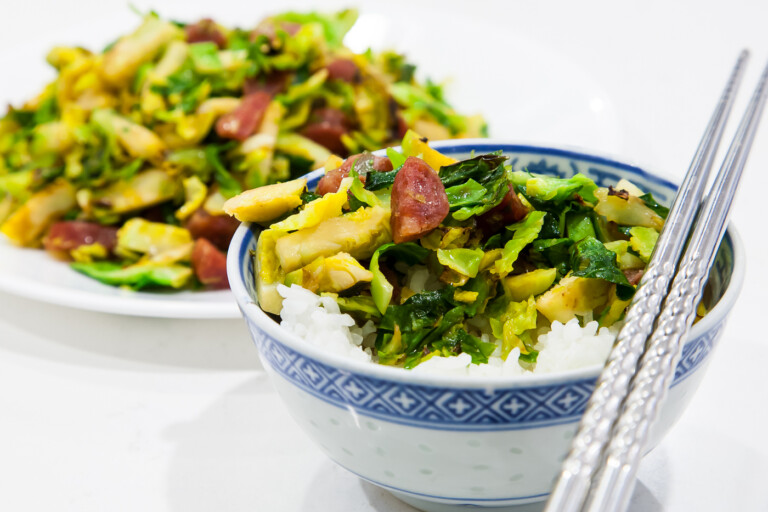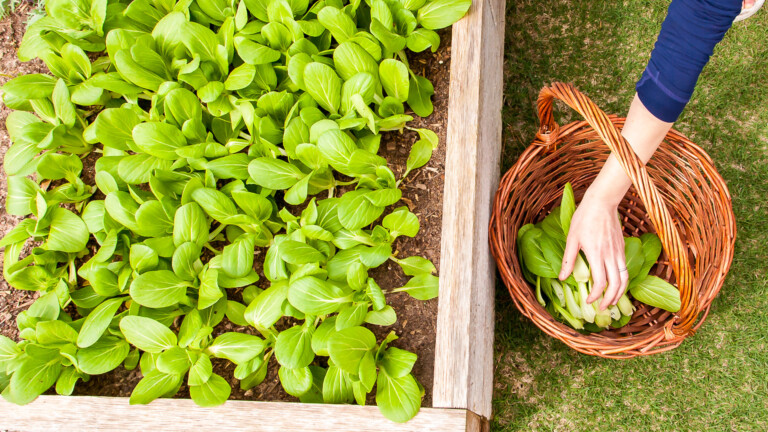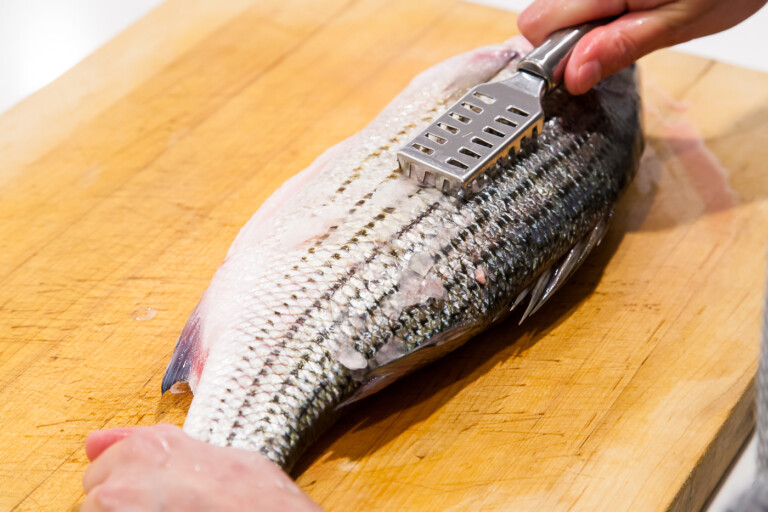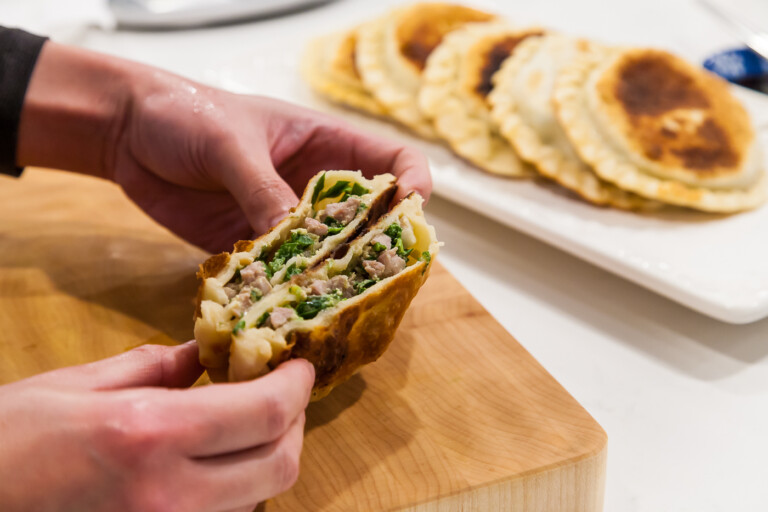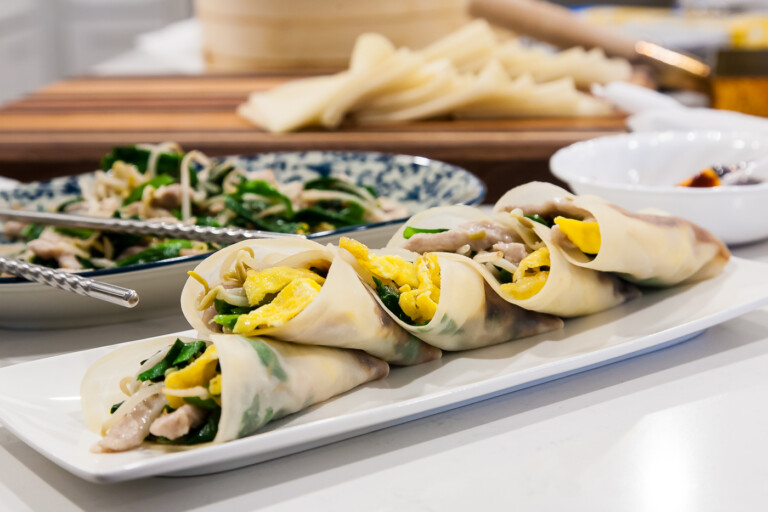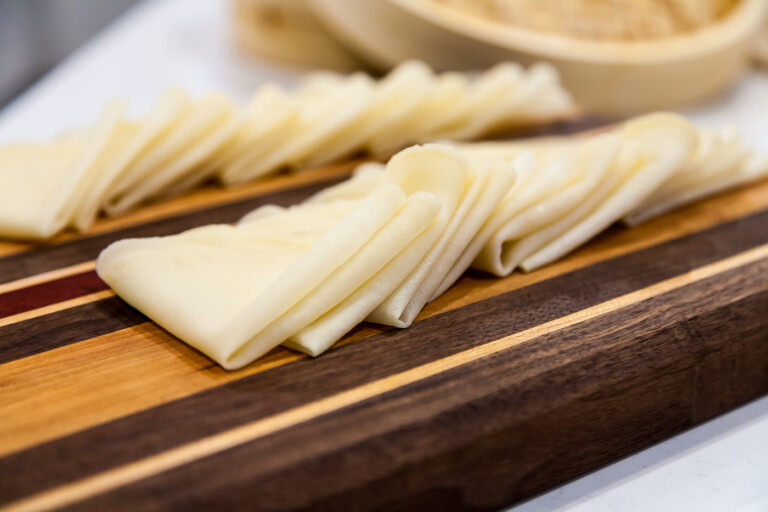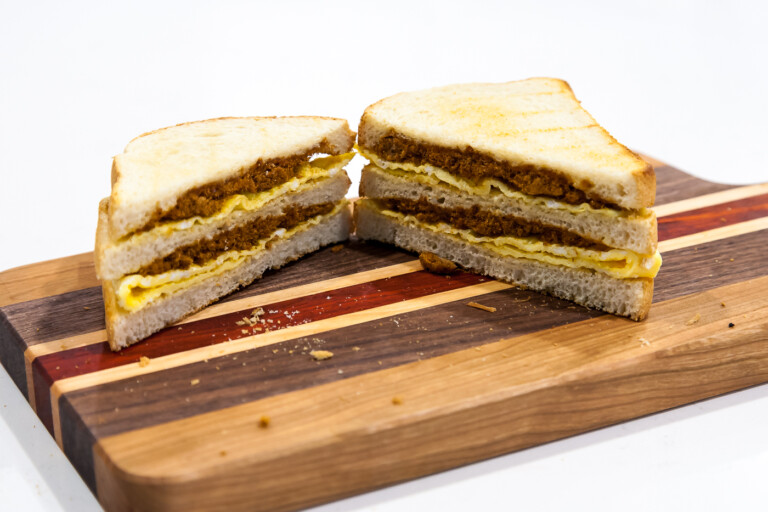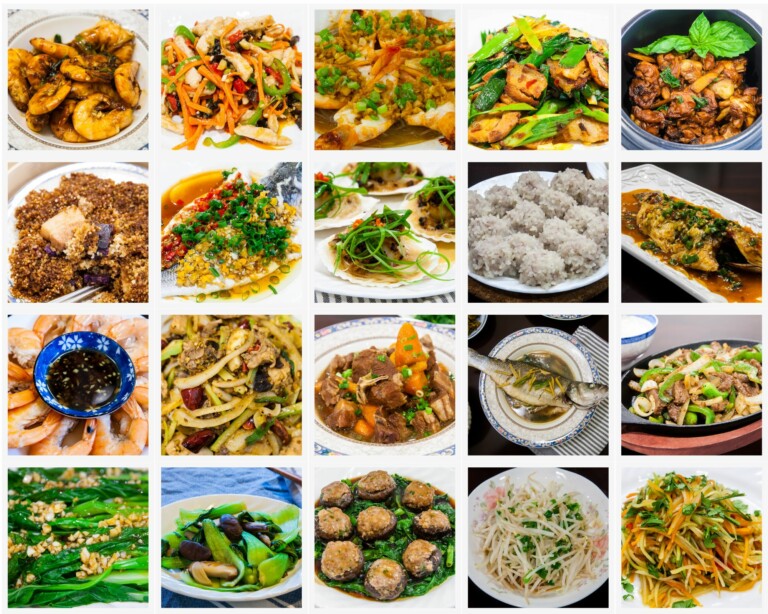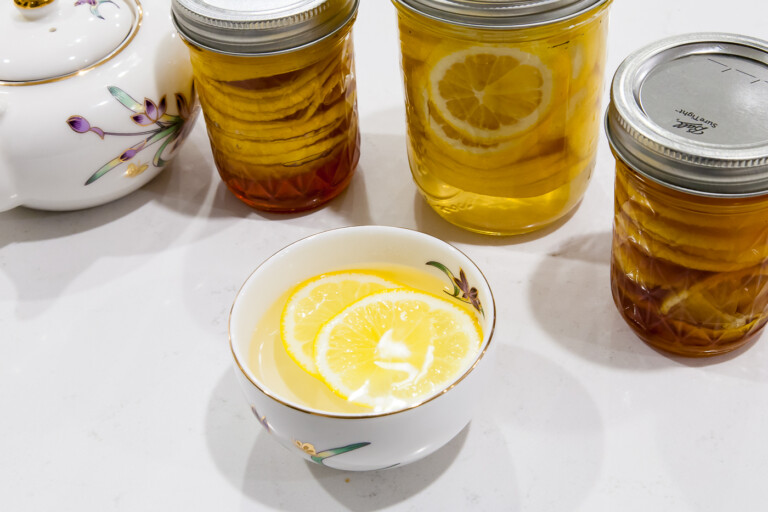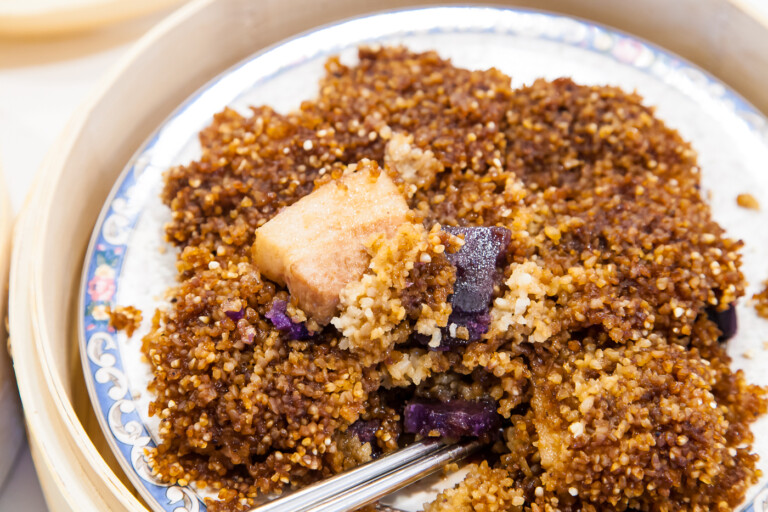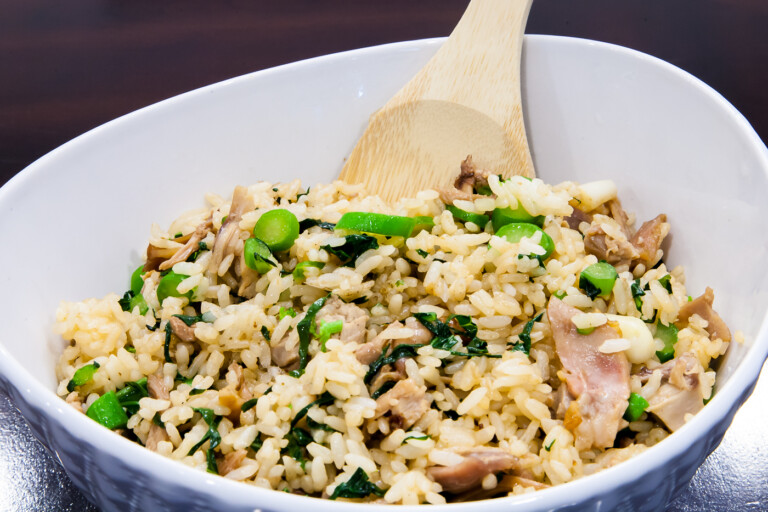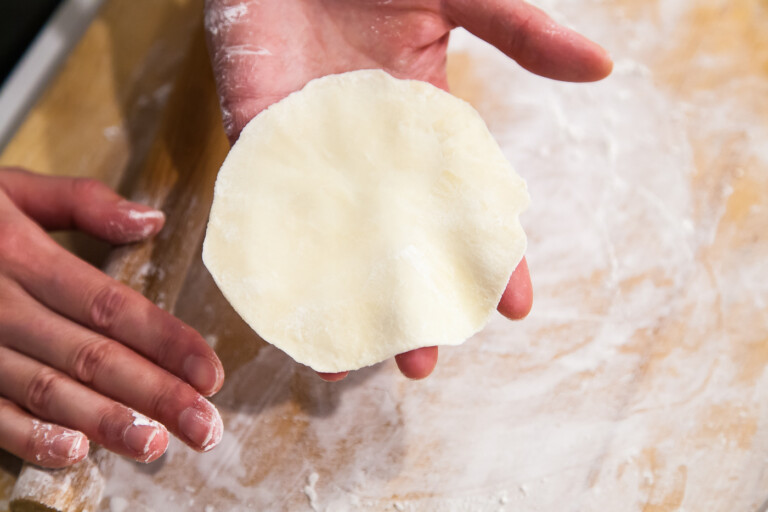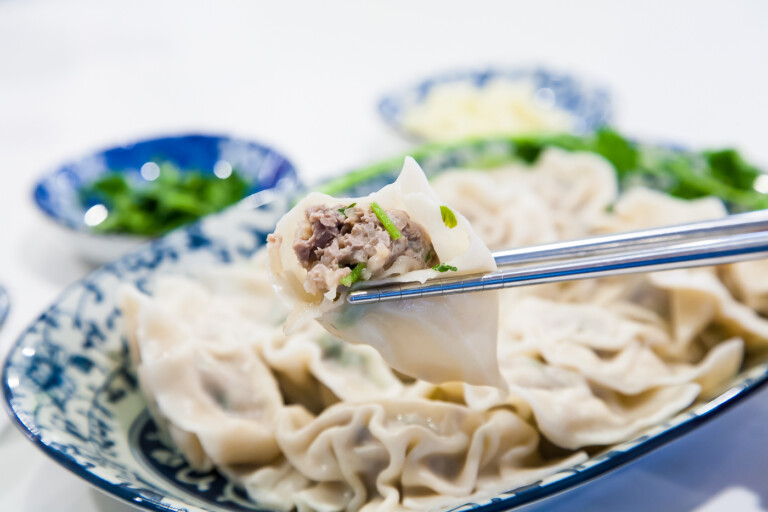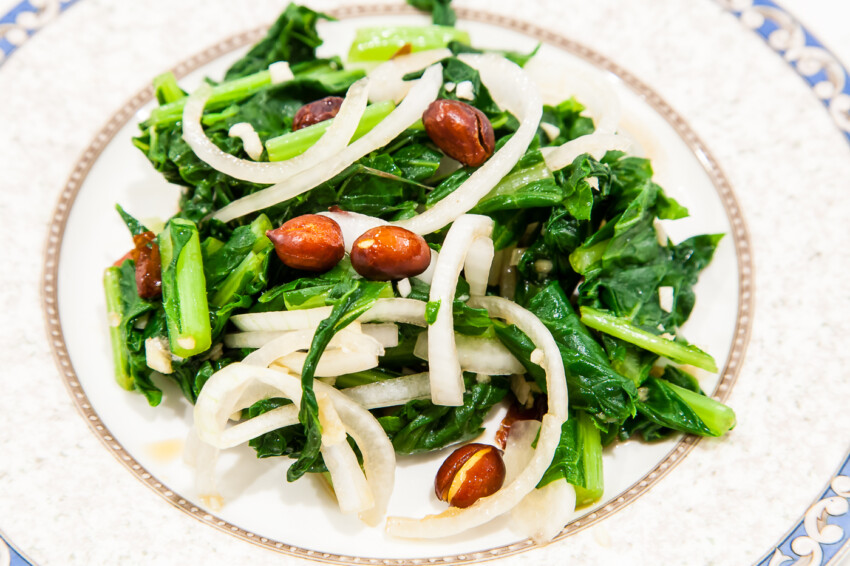
Daikon Radish Leaves (Greens) Salad (凉拌白萝卜樱子)
March 25, 2023 Print
I am pretty frugal, and I do not like to waste food. So when I harvested my homegrown daikon radishes a few weeks ago, I made sure the daikon leaves were also put into good use. In most grocery stores, the daikon only include the root part. Rarely do you see daikon with leaves attached. But if you are a part of CSA (Community Supported Agriculture), or you have a grocery subscription service like Misfits Market or Freshdirect, you might get the whole daikon plant. Do not discard the leaves! Daikon leaves can be made into stirfry, salads, toppings, and lightly pickled dishes, just like any other leafy green. If you are interested in root vegetable greens, I also shared a Carrot Leaves Salad recipe a while ago.
I’ve shared quite a few recipes related to daikon in the past, such as Daikon and Braised Pork Belly, Shredded Daikon Pancakes, and Daikon Pork Bone Soup. Now that I have my own homegrown daikon, I will be sure to include the daikon leaves at my dinner table. This Daikon Radish Leaves Salad uses garlic and onion, and has a pretty strong sauce. You can reduce the sauce ingredient to 1 teaspoon each if you think it might be too strong for your taste. I also really like the fried peanuts, which adds a crunchy texture and nutty flavor to the salad. But I understand some people are allergic to peanuts. In that case, you can just add some sesame oil instead.
In my previous daikon recipes, I talked about how I converted my husband to a daikon lover after years of different attempts. So it’s no secret that I really like daikon. Why else would I go through all this trouble to get my husband to like something that he absolutely would not touch when he was a kid?
This winter I wanted to try growing some winter crops. Since I like daikon so much, I seeded a couple of daikon along with a few other cool-weather plants in early January. One of the many reasons we moved down to Southern Texas after living in the Northeast US for over two decades is the mild climate, which theoretically allow us to have a year-round vegetable garden.
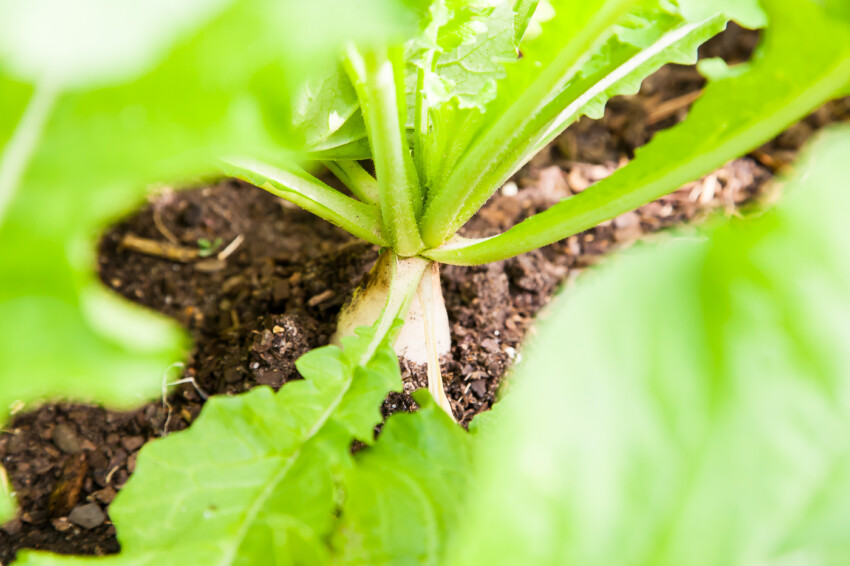
I was told that it is entirely possible to have a winter crop in Southern Texas. But I didn’t know it was this easy. The weather had been super nice and supportive. We had mild temperatures and a moderate amount of rain for pretty much the entirety of January and February. After barely a month, I was able to start harvesting some of the leafy greens. Within two months, I started harvesting the daikon. The best part was I didn’t even have to do any watering during the cool season!
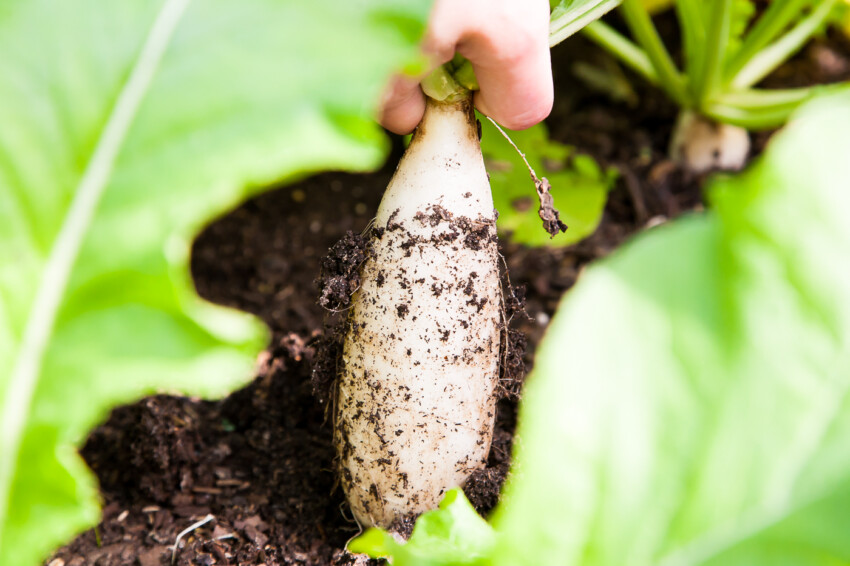
I think I got really lucky with the timing this year. There was no freeze after the first hard freeze that hit Texas in late December. Besides thinning my seedlings, I barely lifted a finger. Unlike my previous spring/summer/fall crops, there were zero pests and no plant diseases in my winter crop. And yet I got two beds full of leafy greens and root vegetables within two months. I will definitely continue gardening in the winter and hopefully I will get the timing right next year as well.
Gluten Free, Vegan, Low Carb
Preparation Time: 15 minutes
Total Time: 25 minutes
Servings: 2 to 4 people
Ingredients:
- 1 to 2 bunches of daikon leaves 1
- 1 small or 1/2 medium sweet onion
- 2 garlic cloves
- 2 teaspoons light soy sauce
- 2 teaspoons Chinese black vinegar (a.k.a. Chinkiang vinegar, or Zhenjiang vinegar)
- 2 teaspoons sugar
- 2 to 3 tablespoons raw peanuts (optional) 2
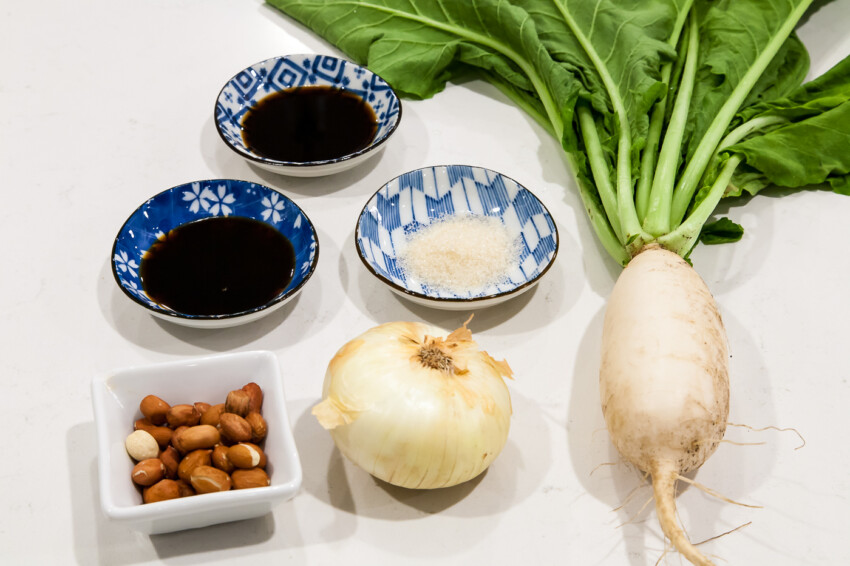
Preparation:
- Heat a large pot of water on medium-high heat. While waiting for the water to boil, prepare the other ingredients:
- Chop the daikon leaves into medium wedges or your preferred shapes. Rinse the chopped daikon leaves under water a few times to remove any dirt.
- Peel a small or medium onion. Cut and discard the two ends and cut the onion into two halves through the ends. Then thinly slice the half onion into half moons. If preferred, rinse the half moon onion slices under water to reduce the onion’s pungency.
- Peel and minced the garlic cloves. You can also use a mortar and pestle to grind the garlic into paste.
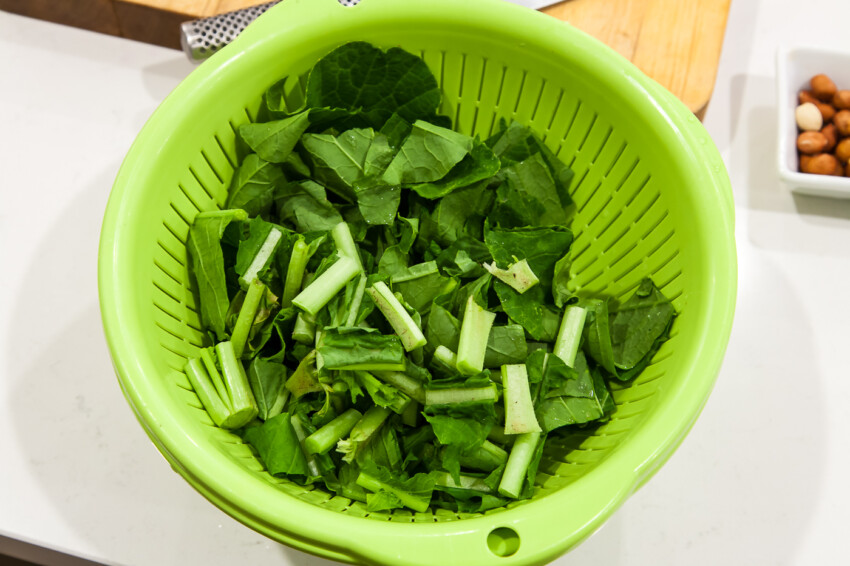
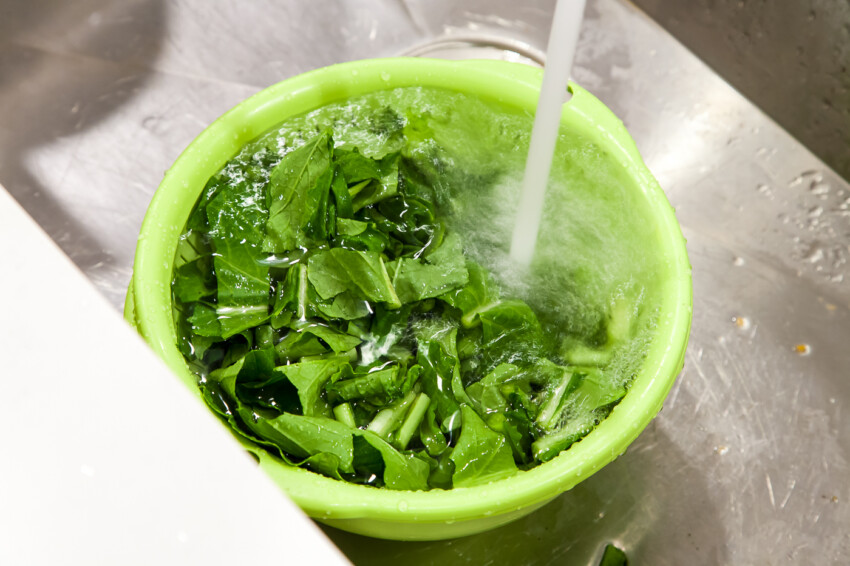
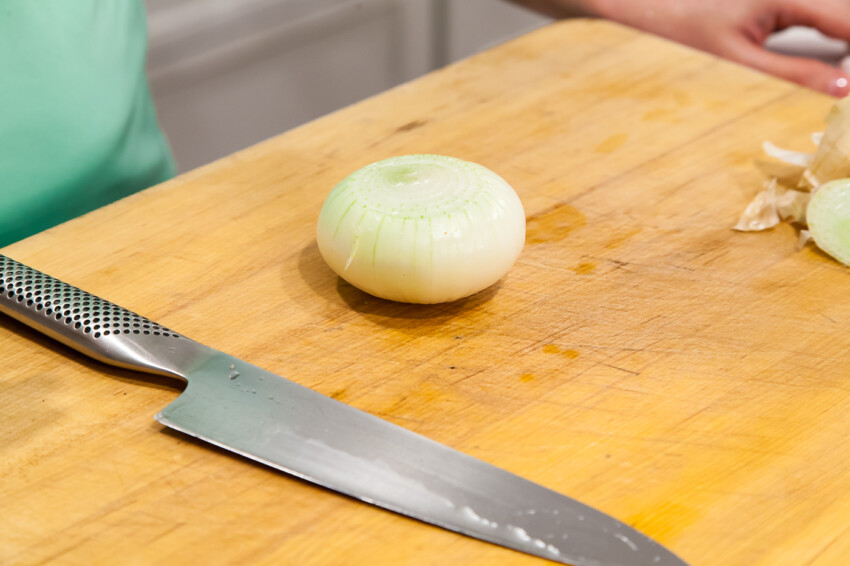
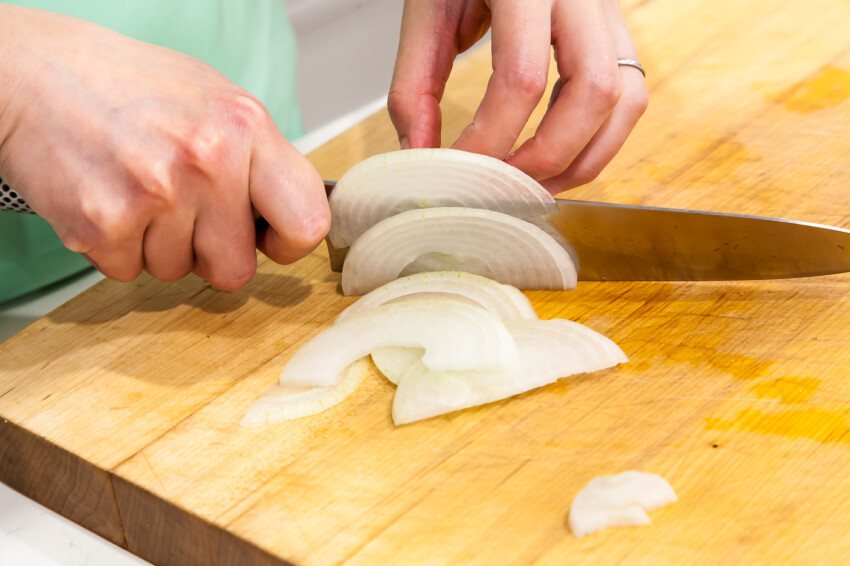
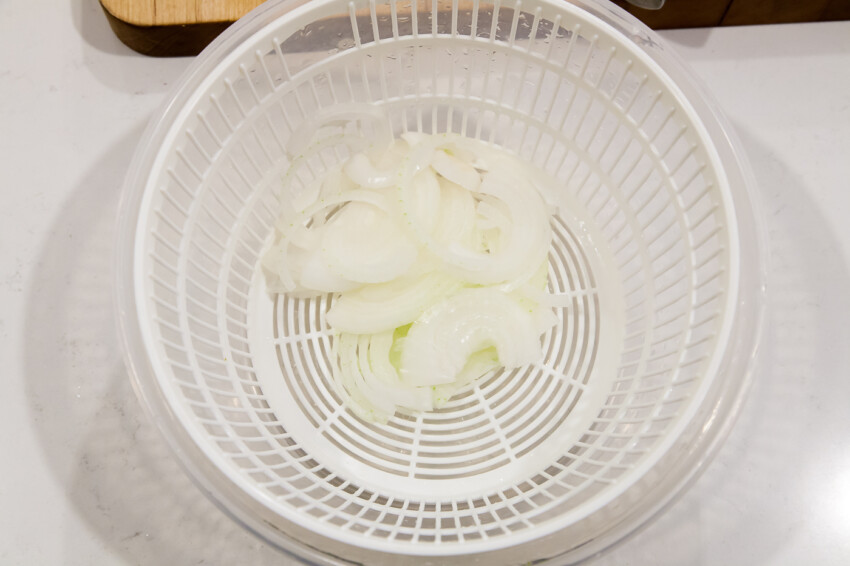
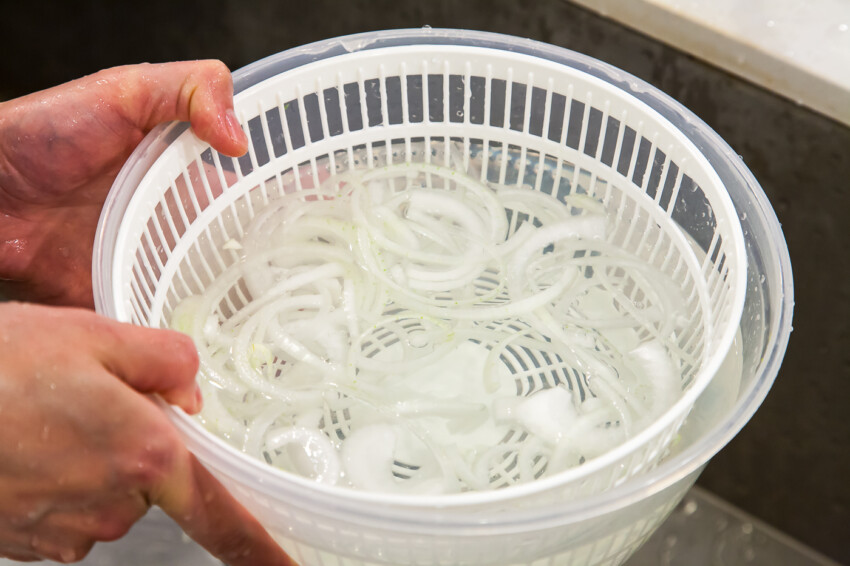
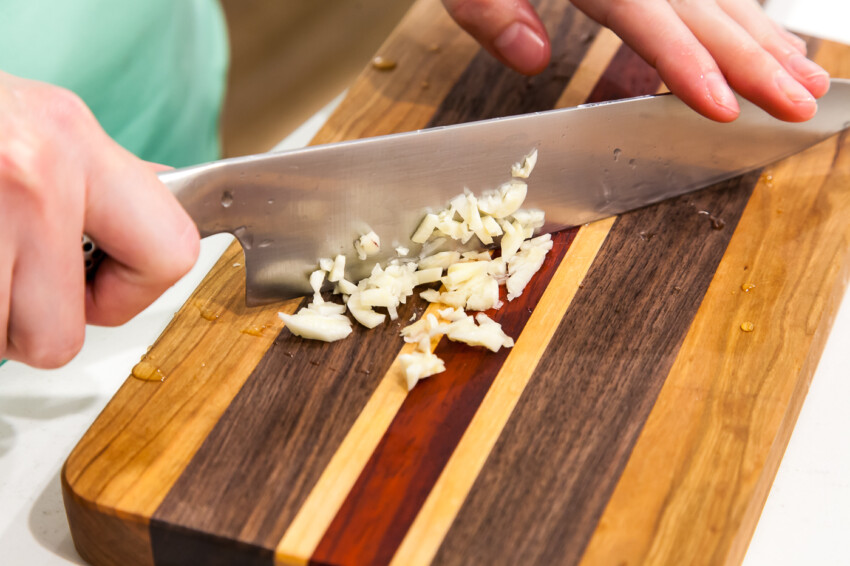
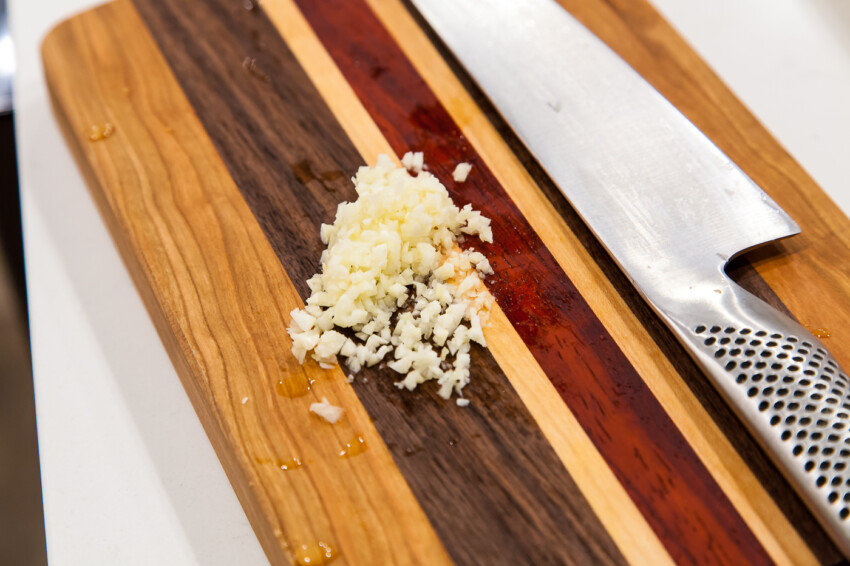
- In a small bowl, mix 2 teaspoons of light soy sauce, 2 teaspoons of Chinese black vinegar, and 2 teaspoons of sugar. (If you don’t have Chinese black vinegar, use 2 teaspoons of balsamic vinegar and skip the sugar.)
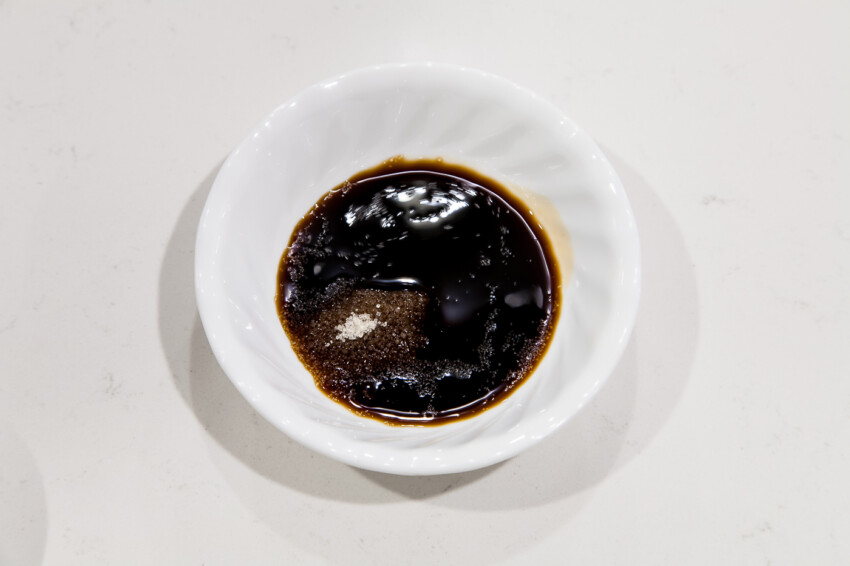
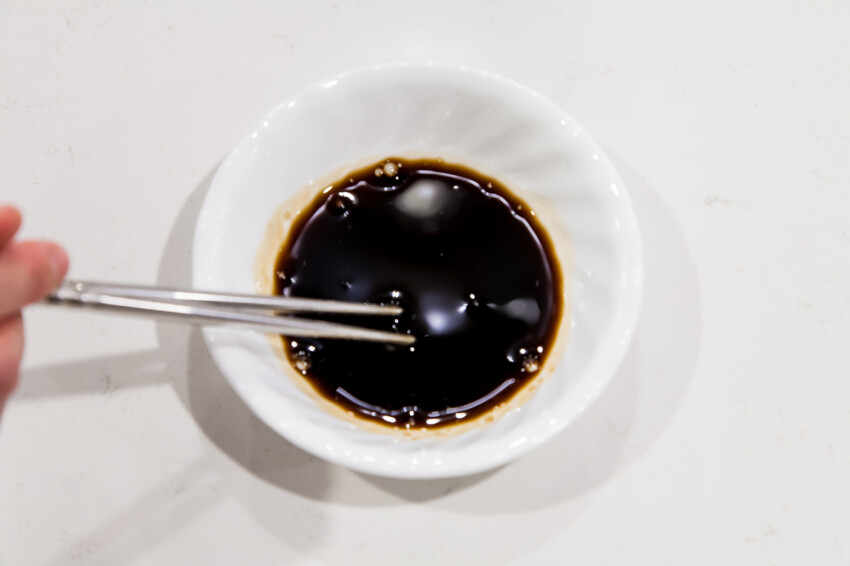
- When the water boils, add the chopped daikon leaves and a few drops of vegetable oil to the boiling water. Blanch the daikon leaves for 3 minutes. After 3 minutes, plunge the daikon leaves into cold water and drain well. Transfer the drained daikon leaves to a large bowl.
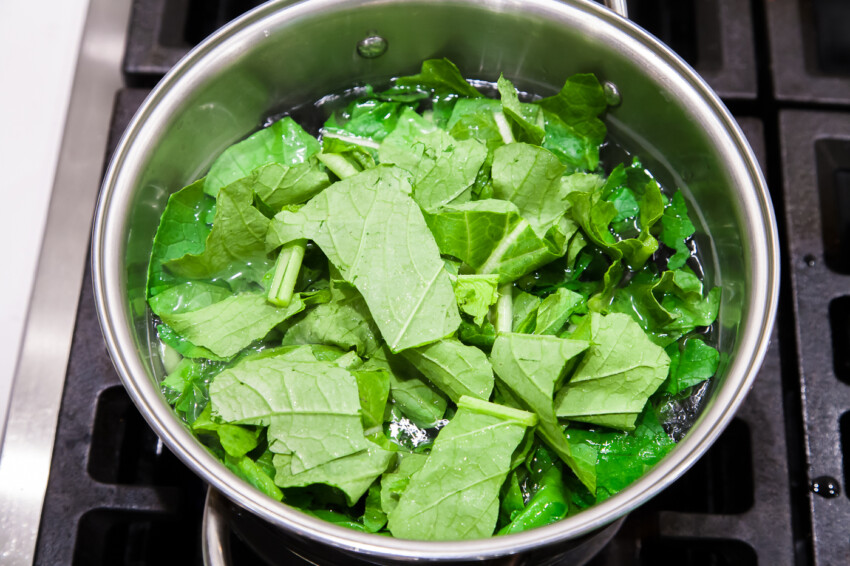
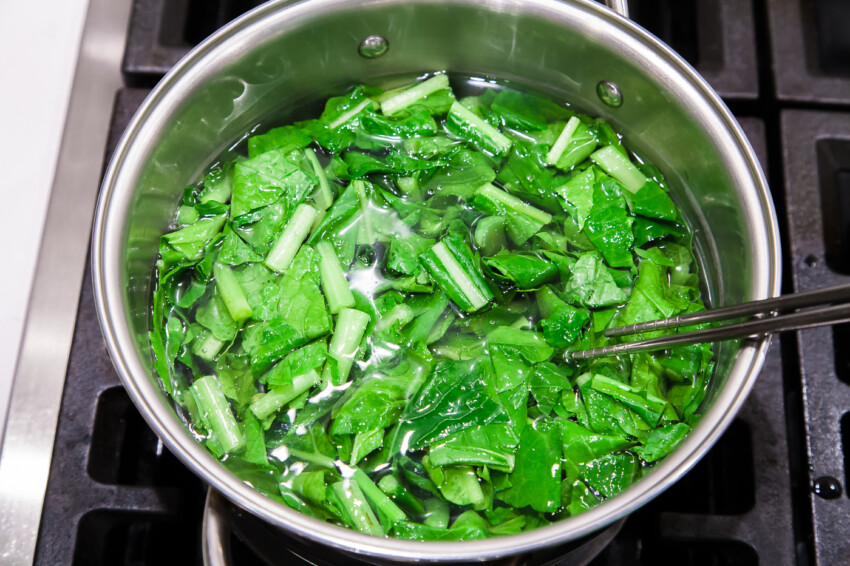
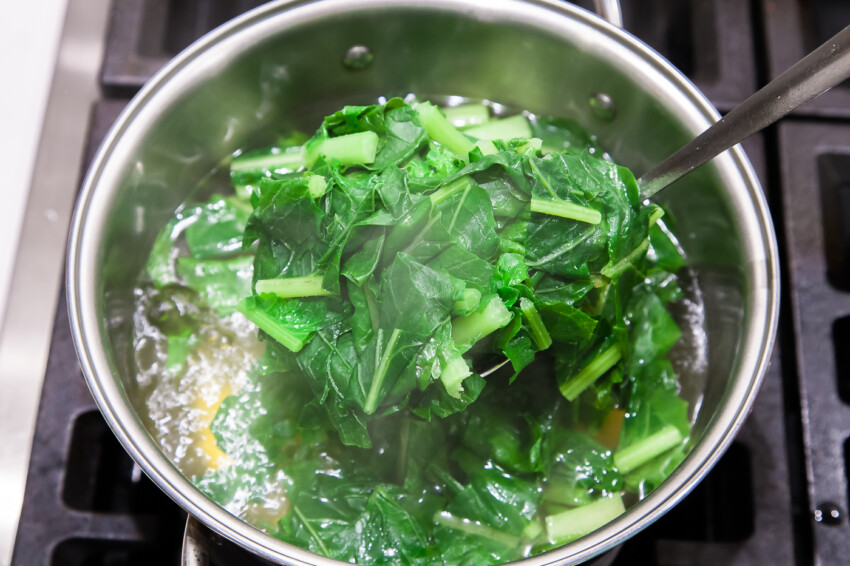
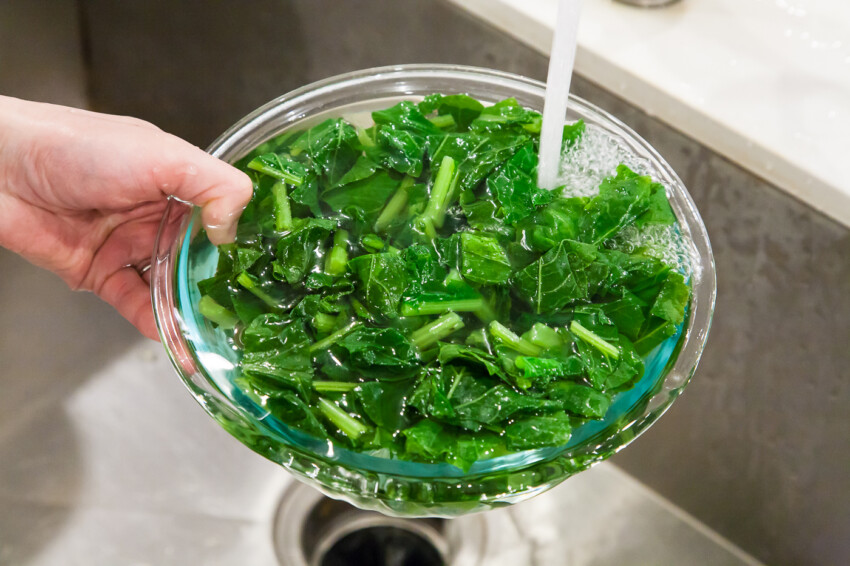
- Add the sliced onion and garlic to the daikon leaves. Pour in the sauce (from step 2) and mix well.
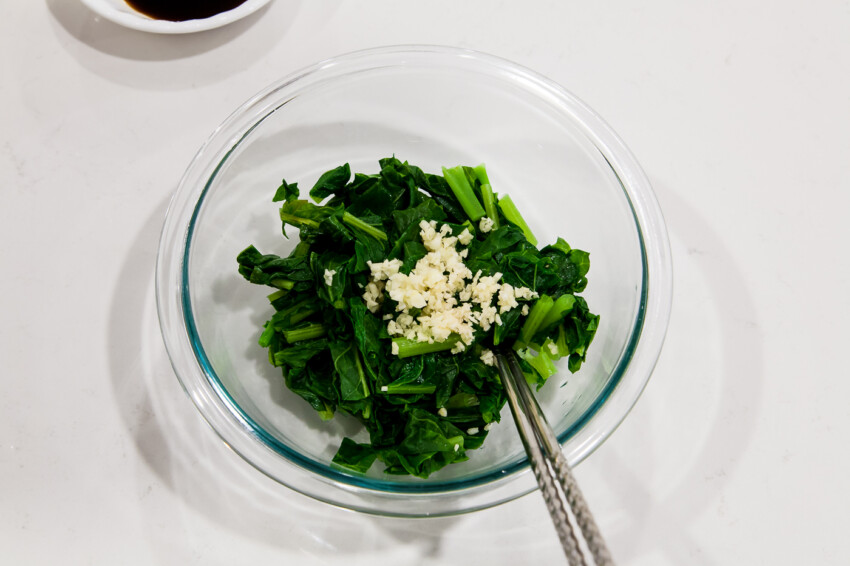
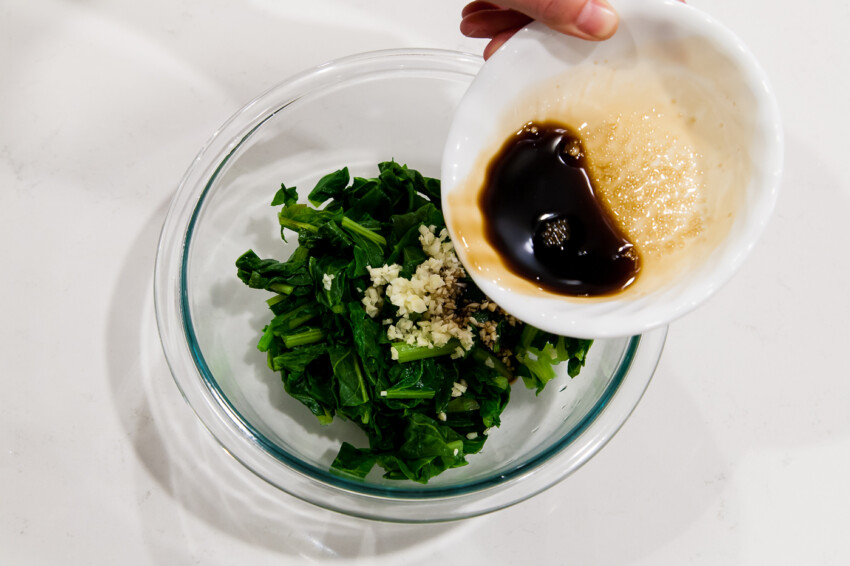
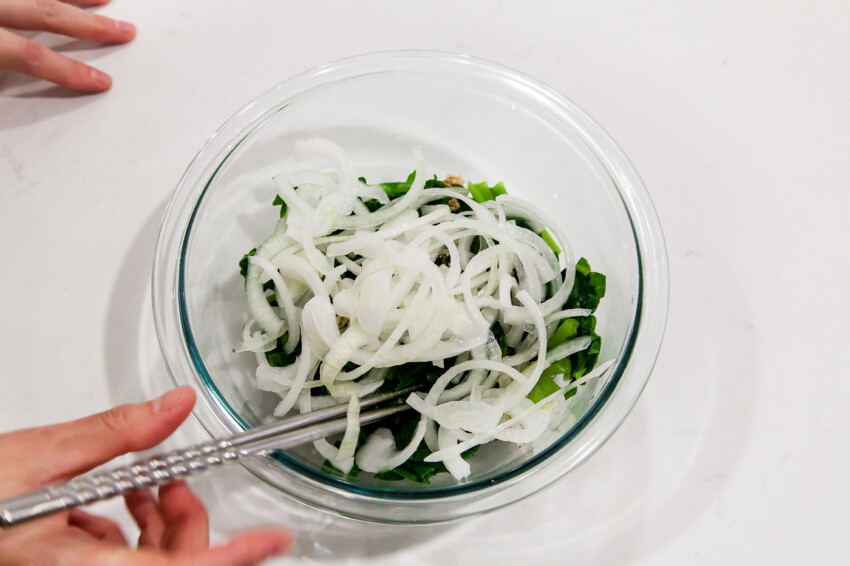
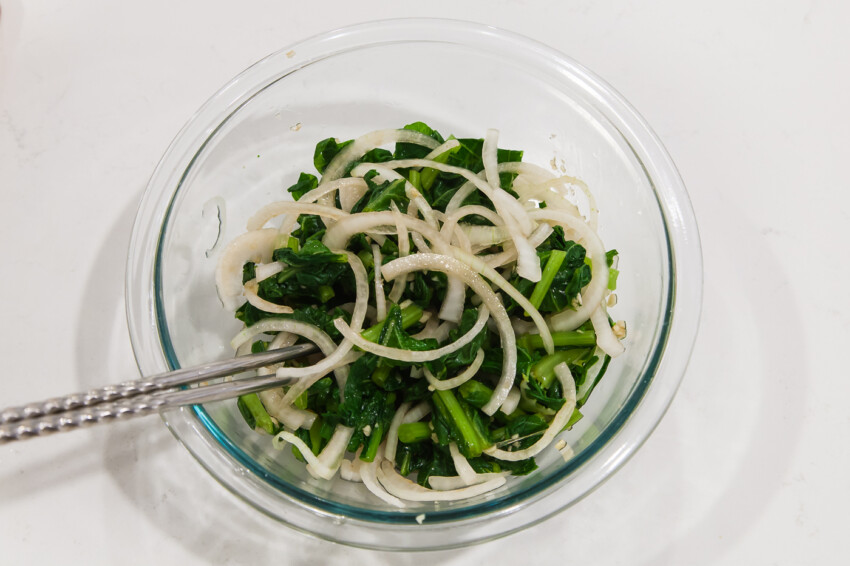
- If adding peanuts, fry the raw peanuts in 2 tablespoons of vegetable oil under medium heat until they change color to a deeper red/brown. Be careful not to burn the peanuts as they cook quickly. Add the fried peanuts to the mixed daikon leaves and mix slightly. Transfer everything to a plate and enjoy!
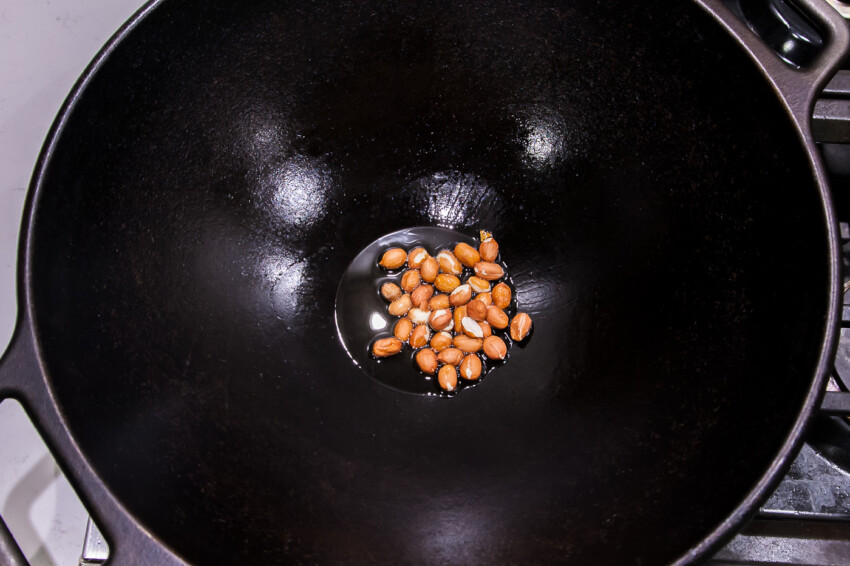
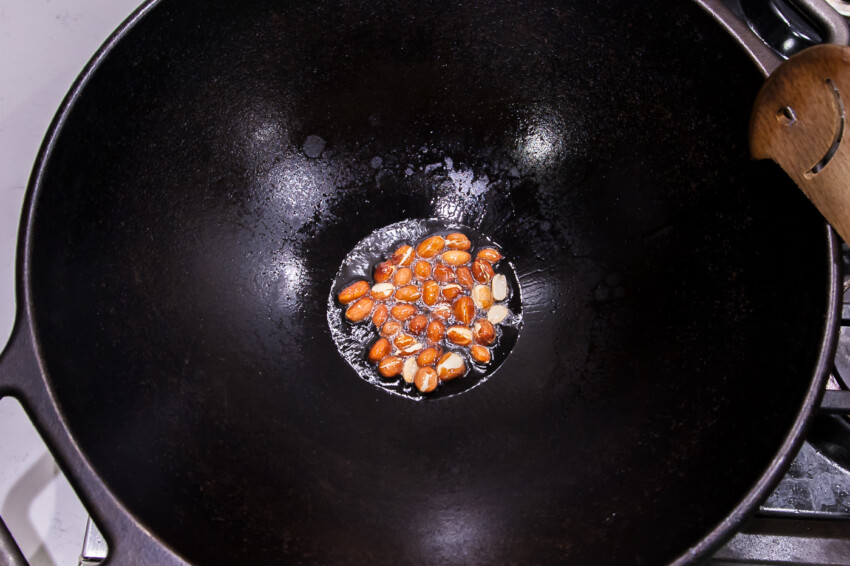
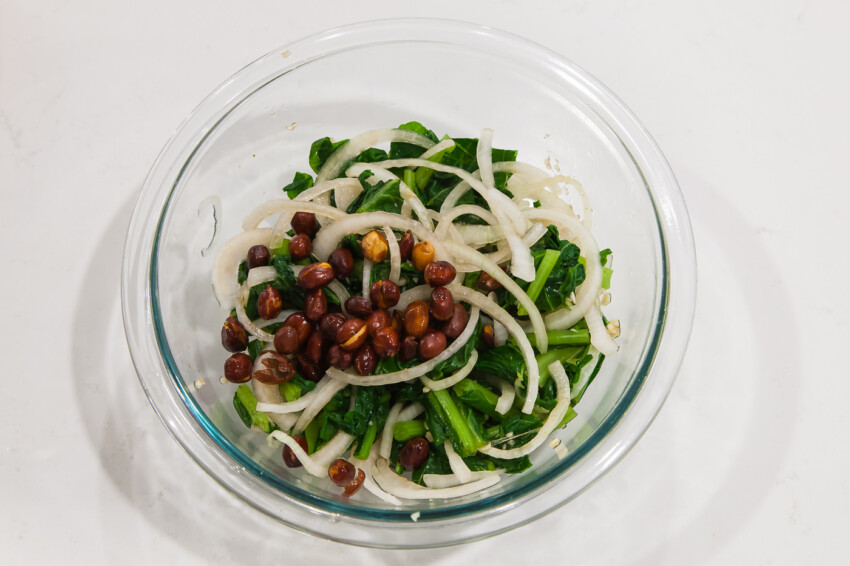
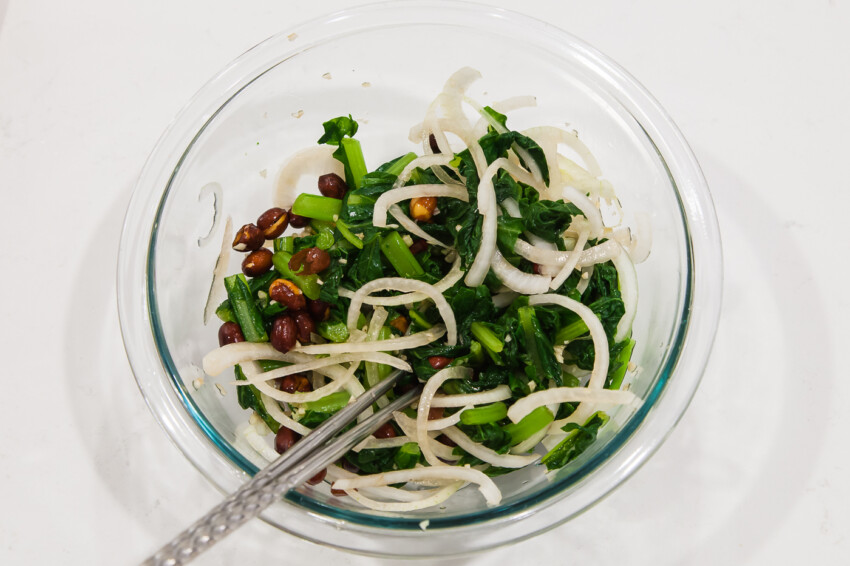
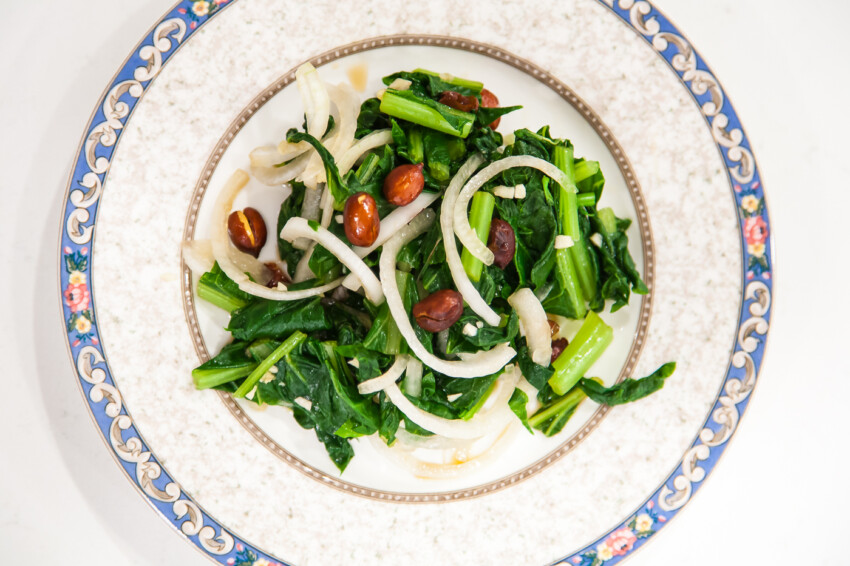
Bon Appétit

Notes:
- You can use other types of radish leaves as well. The younger the radish, the milder the taste.
- If you don’t want to use peanuts, mix 2 teaspoons of sesame oil to the salad at the end.
As an Amazon Associate I earn from qualifying purchases.


